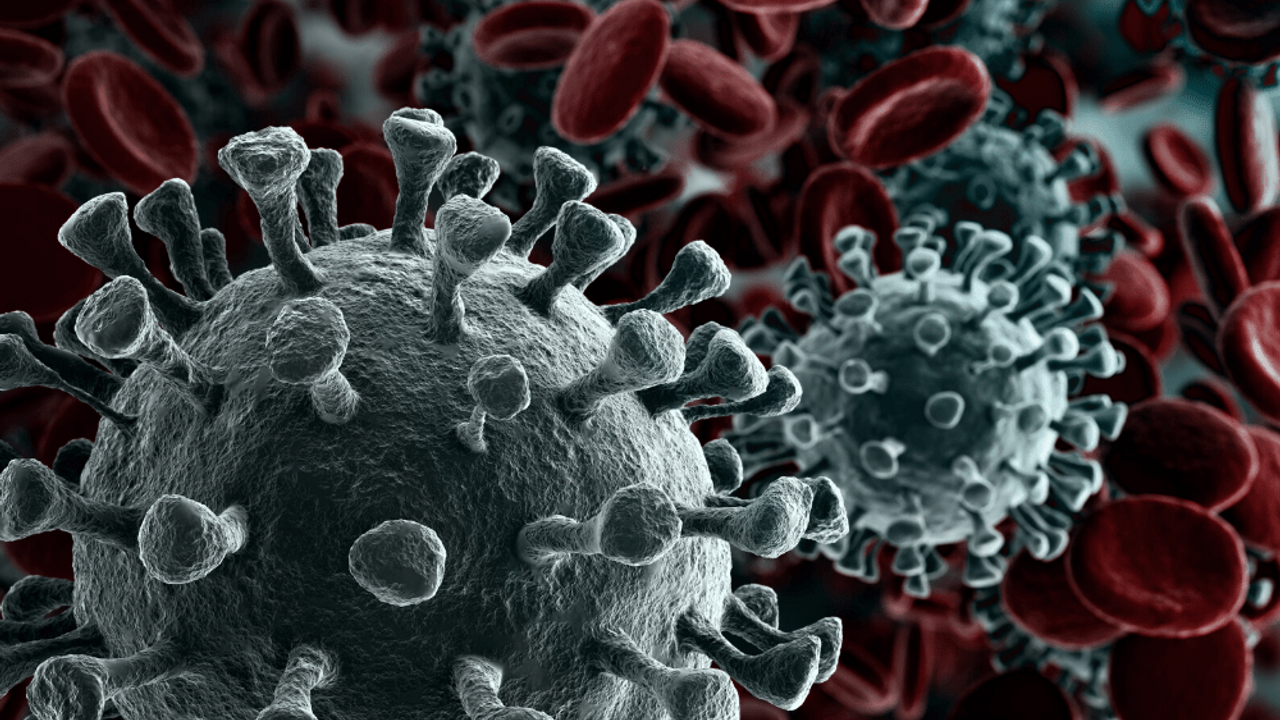Vitamin D & COVID-19
Apr 15, 2021
In this current climate, it seems that everyone is searching for information regarding how to keep their immune systems healthy. Vitamin C supplements have become the new toilet paper this month with demand growing and stores completely selling out. Every other post on wellness social media accounts (mine included) is geared around supporting the immune system. In the last few days I have come across a staggeringly interesting paper trail of studies that may actually give a glimmer of hope in terms of self care at least, surrounding one of the most talked about nutrients of our time. Vitamin D!
Now, because I always have a moral code when it comes to giving information about nutrition, please note that in NO WAY am I saying this simple nutrient will make you more resistant to SARS-CoV-2, nor am I saying that it may offer protection against the development of COVID-19. I wish I could give that kind of statement, but not only is that inaccurate, it is irresponsible and I have been very dismayed to see prominent figures in this industry jump on this crisis as a potential opportunity. So, now that is all said and done, I just want to share some information with you that has certainly shaped my personal self care regime during this time. The information is valid, interesting, and certainly warrants further research.
What are COVID-19 patients dying from?
This seems like the most logical place to start this story. At first, when the outbreak began in China, the message that permeated really was that this was a disease that would really strike the old and infirm and those with underlying health conditions and several comorbidities, and that in the young, it would just be a minor inconvenience no worse than the flu. Oh how very VERY wrong that message proved to be. Fast forward 3 months and here in Europe and in the US we are seeing the young being taken by this infection too. Young healthy adults, people in their forties, teenagers, have all succumbed to COVID-19, sometimes rapidly and dramatically. So what is going on here? The truth is, this is yet to be fully established. We don’t fully understand as this is a new and rapidly evolving picture, but it does seem as though there may be two parts to the story.
In the cases of patients with several comorbidities (other underlying health conditions), there were several patterns observed in patients that died. There was a strong link with hypertension, diabetes, and heart disease. Many of these patients had raised C Reactive Protein (a marker of increased inflammatory load) and D-dimer (a marker of increased blood clotting). This does point to a demographic that potentially has poor metabolic health. In a state of poor metabolic health, there will be systemic inflammation on many levels. As this infection and the transition to COVID-19 does involve a vast amount of inflammation, could it be that the inflammatory overload that can both potentially contribute to organ failure, or increase the risk of sepsis from damaged barrier function – both of which have also been part of the pathology picture in those dying from COVID-19 that had comorbidities, be the key factor? Part of this will also be what is described below too.
But how about the young and the healthy, and those with no other health issues? Well, this is where things can get quite scary.
The Cytokine Storm
Cytokines are small proteins that have a communicatory and regulatory role to play. They are released from many different types of cell in the body, especially the cells of the immune system. They are there to coordinate the body’s response to infection and orchestrate the inflammatory response during infection. Some cytokines will ramp up inflammation, whereas others will reduce inflammation and bring it into a healthy range as the body fights the pathogen. Cytokines will be released at the early stages of infection to trigger localised inflammation in the area where the infection is present, to allow for chemotaxis of immune cells to the area that can fight the infection. When this battle is under control, different cytokines will come into play that will down regulate inflammation and start to bring the tissue back towards a normal healthy state. This is the normal see saw type response that our immune system instigates.
In some individuals, this normal response can begin to go into overdrive. There is a continual elevation of pro inflammatory cytokines with no let up. This mechanism to elevate localised inflammation soon begins to create an inflammatory overload. In COVID-19 the SARS-CoV-2 virus enters the airways and soon makes a move toward the lungs. What starts as a normal healthy response to this virus, soon becomes a very severe and rapid inflammatory escalation in this local area. This ultimately progresses to ARDS (Acute Respiratory Distress Syndrome). This is when we start to see shortness of breath, rapid breathing, and cyanosis (blueish tinge to the skin), where the inflammatory damage to the lung is preventing sufficient oxygen getting in.
In essence we are looking at a situation where a good strong robust healthy immune system, when faced with this pathogen gets beyond carried away, and up regulates the pro inflammatory response over and over to the point where the system hits inflammatory overload.
Pneumonia
Whilst some patients, particularly those with other underlying conditions can experience multiple organ failure from the inflammatory storm, the most common final cause of death from COVID-19 infection appears to be pneumonia, both in the healthy and those with underlying conditions. When the cytokine storm arises in the lungs, the inflammatory onslaught that takes a person to the state of ARDS, begins to disrupt the normal functioning of epithelial lining of the lungs, which would normally be a simple barrier to infection. This allows a bacteria, Streptococcus pneumoniae that is frequently present in the respiratory tract without causing any major issue, to invade almost uninterrupted, and pneumonia unfolds.
Excessive clotting and organ damage
The other thing that is being observed in the severest COVID patients is an excessive blood clotting, circulatory damage and multiple organ damage. This again really is an outcome of the excessive inflammatory load that arises from the cytokine storm.
So where does vitamin D fit into this picture?
Vitamin D was once seen as a fundamental part of calcium utilisation and bone density maintenance, which of course it is, but over the last couple of decades, our understanding of this nutrient has evolved drastically with institutions from Harvard, through to the University of Surrey that I am a graduate of, doing considerable bodies of research on this vitamin. The way we view it now has transformed considerably. Many now view it as being more like a hormone, and considering it is manufactured from cholesterol as many steroidal hormones are, this comparison isn’t inaccurate. But what does this have to do with COVID-19? Well, one of the things that we have begun to understand about vitamin D is that it has regulatory activity upon the immune system. There are vitamin D receptors on the surface of almost all white blood cells (the army of the immune system). At this fundamental level vitamin D can bind to white cells and switch specific genes on and off that can influence the way in which the immune system responds to different pathogens and different stimuli.
However, the most interesting thing to note here is that there is a considerable body of evidence to show that vitamin D can reduce the occurrence of or the severity of respiratory tract infections, especially those viral in origin. Many meta analyses of available data have supported the use of vitamin D supplementation in the prevention of respiratory tract infections, such as that conducted by Martineau et al (2017), which showed that not only was supplementation safe, but also effective as an intervention in the prevention of respiratory tract infections, and the development of ARDS. When you consider that some studies, such as that conducted by Bajwa et al (2016) found that 90% of patients with ARDS were vitamin D deficient, a phenomena also described by Dancer et al (2015) then we can see a potential pattern forming.
So with this observation in mind, what is the mechanism behind this? It all lies with the cytokine storm discussed earlier. This elevated unstoppable onslaught of pro-inflammatory cytokines that creates inflammatory warfare within the lungs causing ARDS and progressing to pneumonia. It seems that vitamin D can actually inhibit the production of pro-inflammatory cytokines. During influenza infection for example (which in the susceptible can follow the same patterns of hospitalisation, ARDS, need for ventilation, pneumonia then death), TNF-alpha, IL6 and 8 were inhibited by treatment with vitamin D supplementation (Khare et al, 2013). These are aggressive pro inflammatory cytokines that are prevalent in the cytokine storm. It has also been shown that applied vitamin D can also reduce a transcription factor called NF Kappa B (Hansdottir et al, 2010), which regulates the increase of certain pro inflammatory cytokines.
There is further support for the role that vitamin D may have. That is the seasonal variance of infections such as influenza. Is there a reason that the infection rates are higher during the winter and lower during the summer? Could it be because our vitamin D status varies throughout the year? We certainly know this to be true. Some studies do suggest that this indeed may well be the case. Khoo et al (2011) set about testing groups of healthy individuals through the four seasons. Blood samples were taken and challenged with a stimulus that would cause a stimulation of pro-inflammatory cytokines. Increased vitamin D levels and a reduced expression of pro-inflammatory cytokines were observed during the summer months.
Conclusion
It is clear that the coronavirus pandemic and the deaths from COVID-19 represent a novel challenge for the healthcare system, and we are learning more about this virus daily. Risk factors, pathogenesis. So much is unfolding in our understanding. However, at the very end stage at least, we are seeing the same patterns – cytokine storms and/or unmanageable inflammatory loads, ARDS, progressing to pneumonia, then either recovery or death. Whilst we should never let small snippets of information cause us to be flippant, with a strong and developing evidence base, and an self care step that is cheap, harmless, and has the capacity to positively impact many aspects of our health, vitamin D certainly does warrant consideration and further research.
Note – Dosage and food sources:
Looking at the totality of data over the years, and the considerable array of benefits in combination with the level of deficiency in most of the Western World, I believe the WHO meagre 400iu daily wont even scratch the surface. I feel that a dosage range of 1000 – 2000iu daily will be the sweet spot for most.
Food sources are few and far between
- Eggs
- Oily Fish
- Full Fat Dairy
- Specially Grown & enriched mushrooms
Even though the above should be included, they are not likely to get you to the levels you need to elevate serum concentration in the same way that time in the sun or a good supplement would.
References
Ednan K. Bajwa , Ishir Bhan , Sadeq Quraishi , Michael Matthay , B. T. Thompson. ‘Low Vitamin D Status Occurs in 90% of Patients with ARDS and Is Associated with Longer Duration of Mechanical Ventilation’. American Journal of Respiratory and Critical Care Medicine 2016;193:A1846
Rachel CA Dancer, Dhruv Parekh, Sian Lax, Vijay D’Souza, Shengxing Zheng, Chris R Bassford, Daniel Park, DG Bartis, Rahul Mahida, Alice M Turner, Elizabeth Sapey, Wen Bin Wei, Babu Naidu, Paul M Stewart, William D Fraser, Kenneth B Christopher, Mark S Cooper, Fang Gao, David M Sansom, Adrian R Martineau, Gavin D Perkins, and David R Thickett. 2015. “Vitamin D deficiency contributes directly to the acute respiratory distress syndrome (ARDS).” Thorax, 70, 7, Pp. 617-24.
Sif Hansdottir, Martha M. Monick, Nina Lovan, Linda Powers, Alicia Gerke and Gary W. Hunninghake. ‘Vitamin D Decreases Respiratory Syncytial Virus Induction of NF-κB–Linked Chemokines and Cytokines in Airway Epithelium While Maintaining the Antiviral State’. J Immunol January 15, 2010, 184 (2) 965-974
Khare, D, et al. Calcitriol [1,25[OH]2D3] pre- and post-treatment suppresses inflammatory response to influenza A (H1N1) infection in human lung A549 epithelial cells. European Journal of Nutrition 2013; 52: 1405–1415
A.‐L. Khoo L. Y. A. Chai H. J. P. M. Koenen F. C. G. J. Sweep I. Joosten M. G. Netea A. J. A. M. van der Ven. ‘Regulation of cytokine responses by seasonality of vitamin D status in healthy individuals’. Clinical & Experimental Immunology. 2011.
Adrian R Martineau, Richard L Hooper, Peter Bergman, Davaasambuu Ganmaa, Emma C Goodall, Christopher J Griffiths, lkka Laaksi, David Mauge, Rachel Neale, Iwona Stelmach, Mitsuyoshi Urashima, Carlos A Camargo Jr. ‘Vitamin D supplementation to prevent acute respiratory tract infections: systematic review and meta-analysis of individual participant data.’ 2017. British medical Journal. 356




